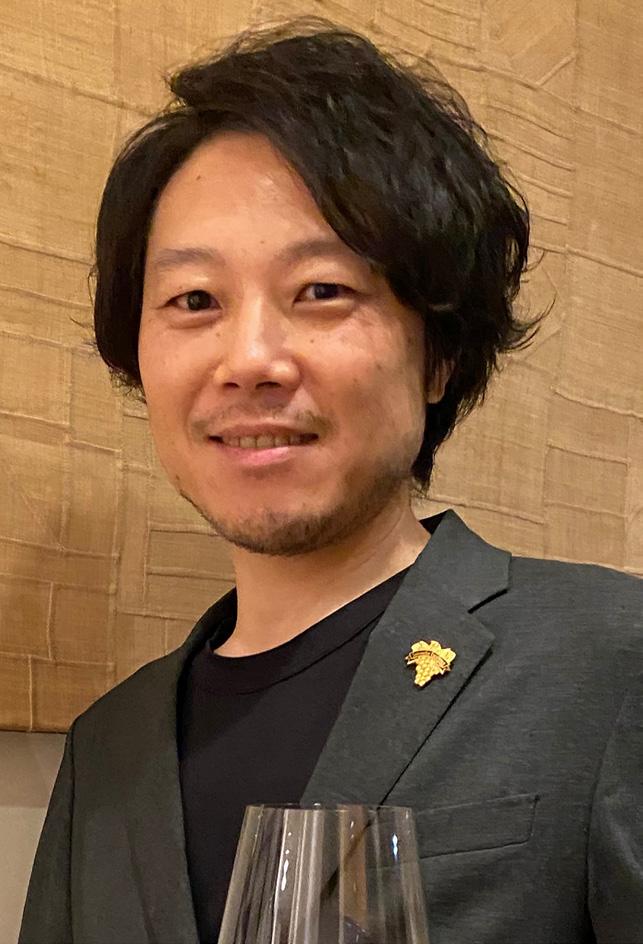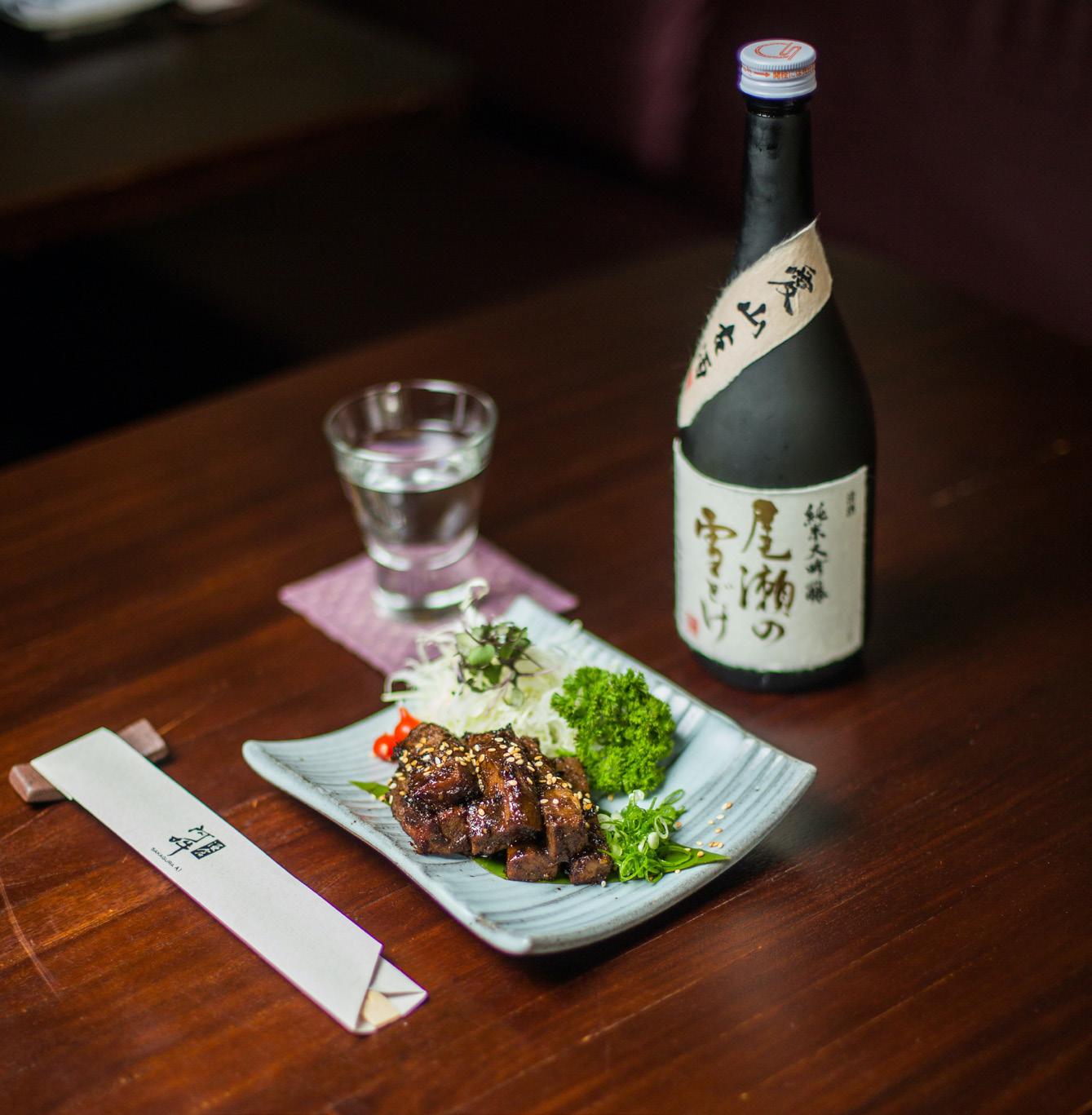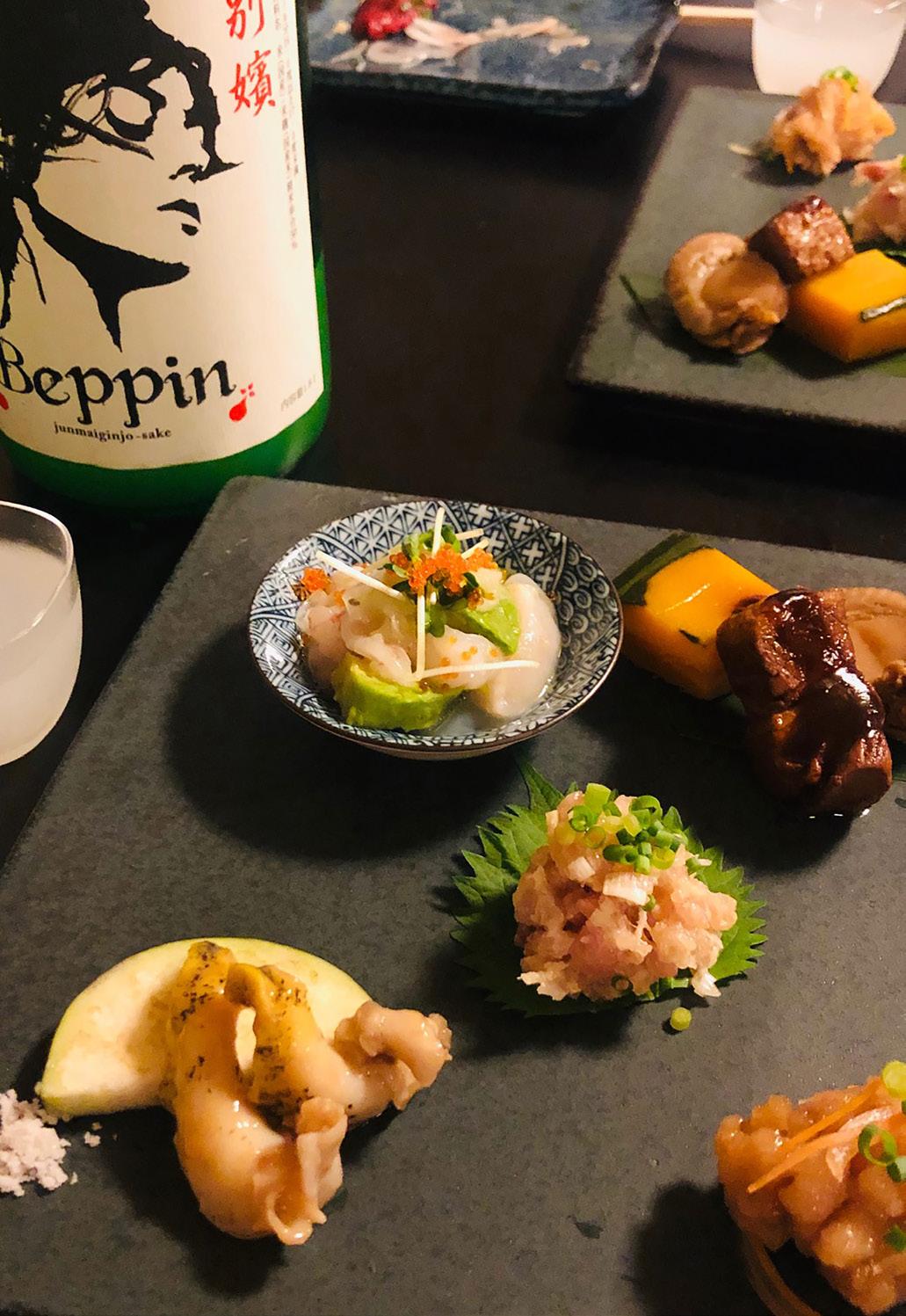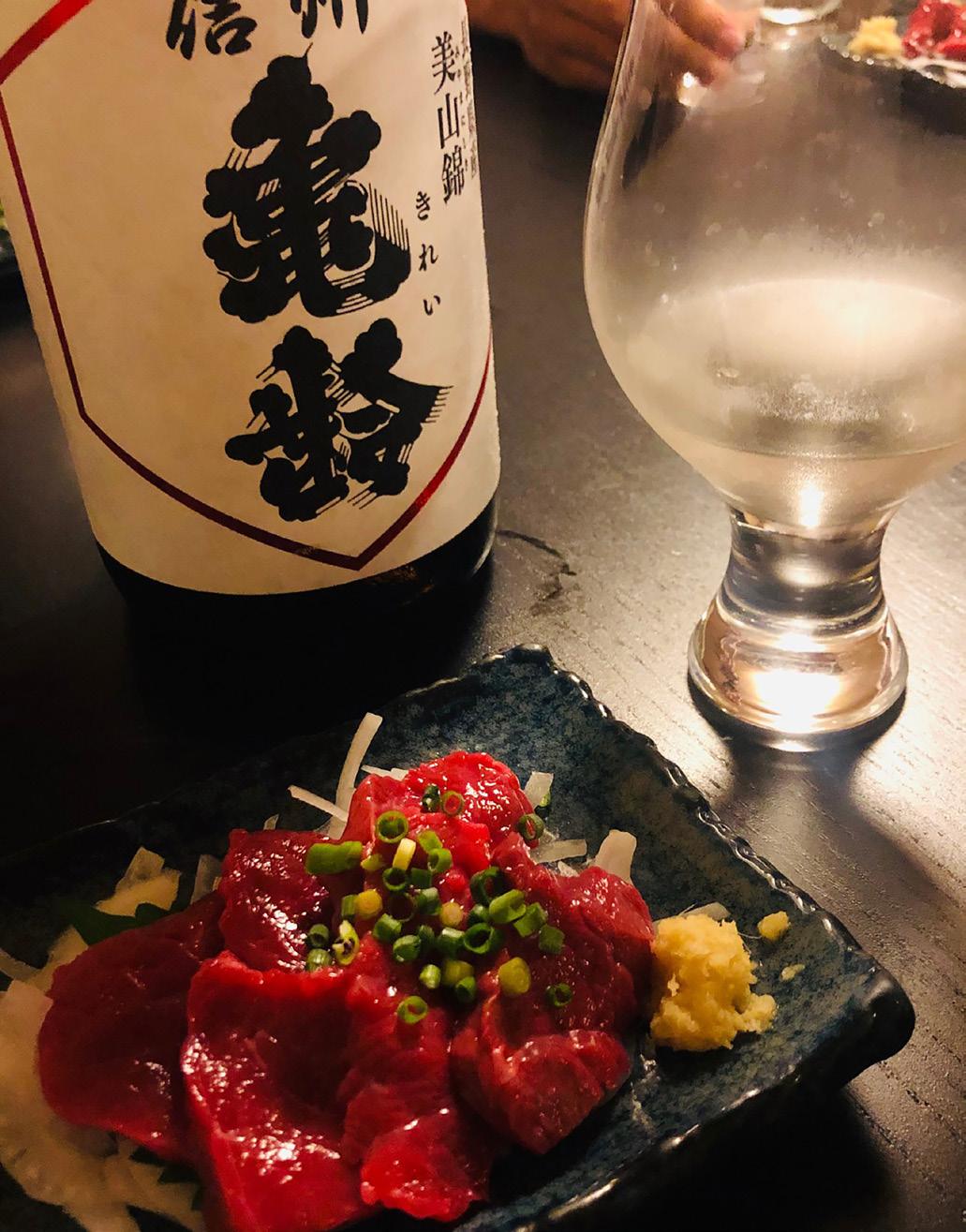
8 minute read
ASi Magazine #10 No Wine Edition
Make Me a Match
The Globalisation of Sake
With Hitoshi Utsunomiya, Japan Sake and Shochu Makers Association (JSS)
Over the last decade, sake has begun to break out of its traditional role. According to Hitoshi Utsunomiya of Japan Sake and Shochu Makers Association (JSS), the rise of sake, which has witnessed more than 10 years of sustained growth, is attributable to a rising number of Japanese restaurants outside of Japan. Yet, while this rise in volume, particularly in key markets like the US and China, is attributable to the expansion of Japanese cuisine, thanks to the Japan Sake and Shochu Makers Association and their focus on education, sake is starting to transcend the traditional and enter a modern new world of cuisine.
This has been a key piece of the JSS strategy. According to Utsunomiya “we intended to introduce sake to the world, paired not only with Japanese cuisine but more diverse styles of food.” Utsunomiya also sees the value of sake as a pairing increasing. “I think the cuisine worldwide is gradually changing, focusing more on ingredients itself. Focusing less on complicated processes and more on the simplicity of ingredients. Consumers are also more interested in eating seafood, for the health benefits. All these factors give sake a great opportunity to be incorporated onto a drink’s menu, for the pairing aspects.”
As for where and how sake should be introduced into a beverage programme, Utsunomiya sees sake as being a by the glass “on a wine list, next to the Chardonnay or Sauvignon Blanc there would be an option of for sake by the glass.” Not surprisingly Utsunomiya doesn’t see sake limited to a single by the glass option on a wine list. “Within sake we have different styles. If we are successful in educating sommeliers, they will be able to talk to consumers about various types of sake they offer and the food to pair with them.”
What was Utsunomiya favourite pairing? He says, “it was a course at the 2023 ASI Best Sommelier of the World Contest in France, featuring scallops paired with Junmai Ginjo.”

Bringing Sake to the Table
Atsuhide Hoshiyama is a specialist of both wine and sake based in Hyogo, Japan. On the wine side he holds an ASI Diploma, Japan Sommelier Association Sommelier Excellence, a Diploma in Wine & Spirits from WSE, and is a Masters of Wine student. His sake accreditations are of similar stature, as he possesses a WSET Level 3 Award in Sake, J.S.A. Sake Diploma and works as a sake critic for Robert Parker Wine Advocate
ASI: What advantages, if any, does sake present in terms of structure and flavour as it relates to food and drink pairing?
Atsuhide Hoshiyama (AH): Sake has a wide range of structure and flavours, so it depends on categories and producer’s philosophy. Each style of sake has different advantages.

ASI: What makes sake different from wine in terms of structure?
AH: Most sakes have a sweetness (even dry styles) that allows them to be paired with a wider range of foods than wine.
Sake with a higher degree of rice polishing ratio has more umami. Sake rich in umami enhances the taste of fish roe, bluefish, and other strong ingredients that are difficult to pair with wine, without bringing out negative elements. In addition, some sake has a bitterness derived from umami, and this bitterness can add complexity to food pairings.
Unfiltered sake has a mellow texture due to the sake lees contained in the liquid. This mellow texture not only works well with foods with a lot of umami, but also softens the stimulation of spicy foods. Therefore, it can be paired with dishes that use hot spices.
Sake can change its structure by changing temperatures: at temperatures below 12°C, the structure becomes lean; at around 40°C, the sweetness and umami are more pronounced and the texture is mellower; at temperatures above 50°C, the acidity becomes more pronounced and the sake becomes drier, giving it a tighter structure. Therefore, one sake can be paired with multiple dishes by changing the temperature.
ASI: What makes sake different from wine in terms of flavour profile?
AH: The Ginjo and Daiginjo styles have gorgeous banana and apple flavours that bring out ethyl caproate and isoamyl acetate. This style of sake can be paired not only with fruit and raw vegetable dishes, but also with delicately sweet Japanese sweets.
Many Junmai styles, such as sake made from the Kimoto and Yamahai methods, have almost no fruit flavours and are dominated by spice and grain flavours. These styles can enhance the flavours of strong ingredients such as game and shellfish without interfering with their flavour profile.
Atsuhide Hoshiyama:
“The umami of sake is a bridge to food ingredients. Sake, rich in umami, creates a synergistic effect with foodstuffs rich in amino acids.”
Aged sake has a soy sauce-like spice and dried fruit flavours because the Maillard reaction progresses more rapidly than in wine. In addition, complex flavours like mushrooms and nuts develop. For this reason, it pairs well not only with soy sauce, but also with spiced sauces and well-seasoned dishes. This style of sake also often has a high sugar content, making it a good match for grain-baked desserts such as tarts and moon cakes.
ASI: Sake has been traditionally associated with classic Japanese cuisine on the dinner table. Do you think sake can be, and how, paired with non-Japanese, even Western cuisine?

AH: Most Western cuisine does not use sugar in its cooking, but this does not mean that the sweetness of sake does not play a role: Western cuisine appetisers include fruit and fruit sauces, and the sugar in sake blends well with the sugar in the fruit. The sugar content of sake can also enrich the taste of food. The sugar content of sake also contributes to the richness of texture, making fatty dishes richer in taste. The sweetness of sake also adds dimension and complexity to the taste of sauces.
The umami of sake is a bridge to food ingredients. Sake, rich in umami, creates a synergistic effect with foodstuffs rich in amino acids. The synergistic effect of umami on stock-based sauces is of course obvious, but when combined with the lactic acidity of sake, ingredients such as cheese achieve a high level of harmony.
Sake can be enjoyed at a higher temperature range, thus better blending in the mouth with warmer dishes. Red wines are served at a higher temperature range than white wines, but with some exceptions, such as Italian Cacciucco (seafood stew), they are difficult to harmonise with seafood dishes. White and rosé wines served
at lower temperatures reduce the volatility of flavours in the food by lowering the temperature in the mouth and also harden the texture of the food. Not only does sake pair well with seafood, but it can be served at a higher temperature than red wine, so it does not interfere with the textures and volatile flavours of the dish. This makes it possible to enjoy a variety of warm Western cuisine.
ASI: Should sake be presented on drinks list intermingled with wine or do you think it should remain as its own section?
AH: Depends on the drink list. If the restaurant has just one drink list which includes all categories of beverages, sake of course should be intermingled in the list. However, if the restaurant has independent wine list, sake should remain as its own section. As I mentioned above, sake has a wide range of styles and categories. Most wine lists have several category headers like Sparkling, White, Rosé, Red, Sweet, Country, Region, even Natural wine, etcetera. Each sake should be put into a category, that is easy to understand by customers. This does not necessarily have to be a traditional categorisation. In some cases, a categorisation that is easier to understand for customers unfamiliar with sake, such as "fruity," "savoury," "rich," or "delicate," may be more appropriate.
Five Classic Sake and Japanese Food Pairings

Ginjo
Service Temperature: 6 to 8°C
Pairing: Squid Sashimi with salt and Sudachi citrus juice.
Junmai Daiginjo
Service Temperature: 8°C to 12°C
Pairing: Nerikiri, a traditional Japanese sweet made by mixing sweetened white bean paste with refined rice flour
Honjozo
Service Temperature: 50°C to 60°C
Pairing: Grilled Mackerel with salt
Junmai (Kimoto method)
Service Temperature: 35°C to 45°C
Pairing: Japanese eel Kabayaki-style with Japanese pepper
Aged Sake
Service Temperature: 20°C to 40°C
Pairing: Sukiyaki. Using this aged sake in the sukiyaki sauce will enhance the affinity of the pairing.
ASI: Can you take the same five classic sake styles and recommend dishes from other parts of the world to pair with them?
Five Sake and Global Cuisine Pairings
Junmai Daiginjo

Service Temperature: 6°C to 8°C
Pairing: Vietnamese summer roll
Junmai Ginjo
Service Temperature: 8°C to 12°C
Pairing: Burrata cheese and fruit salad
Honjozo
Service Temperature: 4°C to 6°C
Pairing: Caviar
Junmai (Kimoto method)
Service Temperature: Around 20°C
Pairing: Saumagen with Sauerkraut
Aged Sake
Service Temperature: 35°C to 45°C
Pairing: China Zong (bamboo wrapped Chinese rice)










